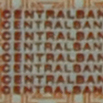|
|
Paper Bank Notes have passed through various stages of changes. Polymer Bank Notes is evolution of technology and many countries have adopted this technology. It was pioneered in DuPont in the early 1980's with Tyvck polymer. This was unsuccessful & in late 1980's Reserve Bank of Australia developed & perfected it with Guardian polymer, which is in vogue now. Polymer Bank Notes were developed to increase the durability of currency, & to enhance security against counterfeiting. The features includes durability, cleanliness, security, cost saving, environmental friendly. The traditional secirity features used on paper banknotes are also applied on polymer notes. Such as intaglio, offset and letterpress printing, latent images, micro printing, & intricate background patterns. Security thread and OVI (Optical Variable Ink) can also be added. Polymer notes also have advantage to incorporate new and enhanced security features, such as transparent windows, diffraction gratings, and holograms. The tranparent window where OVD is located is the key security feature of a polymer note.
In 1996, Australia was the first country to use a full set of circulating polymer banknotes, New Zealand followed suit with its $ 20 banknote in 1999, whilst Romania became the first European Country in 1999, and the third country in the world, to introduce a full set of circulating polymer bank notes. Zambia is the first African Country to adopt polymer bank notes in 2003 when it issued 500 Kwacha and 1000 Kwacha polymer bank note.
|
|
|



